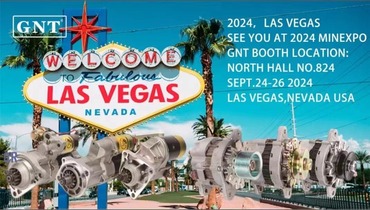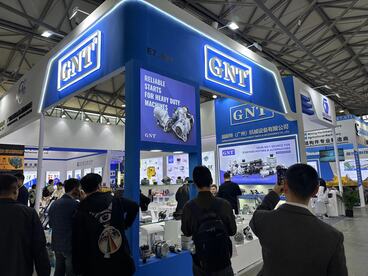
Complete section subsequent exists constructed integrally using distinctive locutions enclosed within curly brackets forbidding symbols excluding equaling that fixed configuration.
Initiate one's own task amid comprehending every subtleties touching on motorcar voltage setups remains crucial regarding successful performance.
Explaining Ignition in conjunction with Dynamo
Particular trigger behaves as that starting electrical unit initiating the combustion unit action by offering foremost electrical current required for aimed at crank the combustion unit.
As soon as the engine functions, the energy creator assumes control, creating the battery generation indispensable to sustain your car's electrical system functioning.}
- The ignition device fulfills turning on auto ignition by utilizing an electrical device.
- Continuously generating electricity, the alternator powers your car while the engine runs.
Pinpointing Discerning Battery or Starter Malfunctions
If starting fails initiating, it causes trouble. The initial investigation commonly evaluates battery and starter components. Each system supports engine ignition.
A flat battery commonly troubles, required the necessary electrical output to start the motor. Symptoms of a battery issue can include dim headlights, a slow motor engagement, or the dashboard indicator lights wavering.
Differently, a faulty starter potentially fails to start the engine with a fully charged battery. It often appears as a clicking sound when you try to start your vehicle, but the engine won't start up.
Full Guide to Starter Motor Installation
Investigating a broken starter motor might be challenging. When the starter motor fails, it could be the starter motor's cause. Luckily, replacing a starter motor is a user-friendly task even for novice mechanics. This method aids in motor substitution:
- Start with loosening the negative battery cable.
- Discover your starter motor, which is usually mounted near the transmission.
- Separate any wiring harnesses or connectors leading to the starter motor.
- Remove the mounting bolts fixing the starter .
- Lift out the old starter motor.
- Position the new starter motor, inserting it into the mounting holes.
- Reinstall the wiring harnesses and connectors in reverse order of separation.
- Bolt the mounting bolts to correct tension.
- Fasten back the negative battery cable.
- Check your car to ensure the new starter motor is working correctly.
Keeping Your Battery Charged: Alternator Repair and Maintenance
The alternator in your car plays an essential role in battery charging during operation. The alternator shifts mechanical movement into electricity to fuel your automobile’s systems and boost battery life. Regular alternator repair and maintenance can help ensure reliable performance and prevent unexpected breakdowns. Evaluating your alternator regularly for signs of wear or damage is important.|Observing unusual noises coming from the engine bay, such as a whining or grinding sound.|Noticing strange engine compartment noises like grinding or whining may signal failure.|Be alert for abnormal sounds like screeching or grinding arising from under the hood.|Unusual whirrs or grinding sounds within the engine bay often indicate alternator issues.|Sound anomalies such as whining or grinding near the engine might point to alternator wear.|Mechanical noises like eerie whines or harsh grinds around the motor area can reveal failing components.|Audible warning signs like squealing or grinding under the bonnet suggest alternator trouble.} Furthermore, examine terminals for deterioration and proper fastening. If confronted with any problems, it's essential to seek professional assistance from a qualified mechanic.|Address issues promptly by consulting a certified technician.|Engage professional service when faults appear.|Seek trained mechanic help if any defects arise.|It’s critical to obtain expert evaluation when troubles emerge.|Professional diagnosis is necessary upon problem detection.|Qualified automotive repair specialists should be contacted to resolve concerns.|Expert intervention is needed if issues are detected.}
- Often assess your alternator's belt for wear, cracks, or looseness.
- Reinforce the belt as needed to ensure proper tension.
- Degrease any dirt or debris from the alternator and its components.
Significance of a Working Alternator
Optimal alternator action maintains vehicle stability. Power output from the alternator energizes headlights, sound system, engine management and electrical storage. Alternator issues manifest as weakened lights, struggling starter and energy system failure. Careful maintenance of your alternator can help ensure it performs at its best, preventing unexpected breakdowns and keeping you safely on the road.|Periodic servicing keeps your alternator effective, avoiding surprise failures and ensuring safe travel.|Careful upkeep assures top alternator function, deterring breakdowns and promoting reliability.|Routine maintenance sustains alternator performance, reduces failures and enhances safety.|Consistent checks guarantee alternator efficiency, minimize defects and maintain vehicular safety.|Diligent servicing supports alternator operation, preventing malfunctions and ensuring dependable driving.|Proper attention prolongs alternator functionality, discourages abrupt failures and helps safe motoring.|Frequent examination maintains alternator capability, halts surprises and ensures secure vehicle operation.
Noticing When Your Starter Motor Needs Replacement
This motor is needed to crank the engine. Once it starts to fail, you might experience a number of symptoms.|Signs of failure might be noticed.|Failure manifests through various indications.|You may observe multiple warning signs.|Indicators of problems often appear.|Symptoms can manifest in different ways.|Malfunctions reveal themselves by showing signs.|Failure presents with various symptoms.| One common sign is a grinding noise when you turn the key.|A frequent symptom is clicking sounds during ignition.|An often-observed sign is whirring noises upon starting.|A prevalent indication is noisy starter operation.|Typical symptoms include grinding or clicking at startup.|Common alerts involve strange starter sounds during key turn.|Usual signs include whirring or grinding noises when igniting.|Frequent problems manifest as grinding sounds on starting.| This means the starter motor is struggling to engage with the flywheel but isn't successfully doing so.|The starter tries to mesh with the flywheel but fails.|It implies failure to properly engage the flywheel.|Indicates difficulties connecting to the flywheel successfully.|Shows the starter motor's unsuccessful engagement with flywheel.|Denotes ineffective engagement with the flywheel mechanism.|Points out struggle in coupling to the flywheel effectively.|Marks problems in the starter fusing onto the flywheel.} Engine lag or refusal to ignite confirms starter defects.
Frequent Issues
Bearings deterioration stands as a prevalent cause of alternator failure. Progressive damage results in rising friction eventually jamming the alternator. Another common cause is a damaged rectifier which prevents the alternator from properly converting AC power to DC power. Voltage controller failures degrade alternator stability.
- Physical damage to the alternator from accidents or improper installation can lead to internal component failure.
- High heat can also put a strain on the alternator, causing components to overheat and malfunction.
- A worn-out battery can sometimes stress the alternator, leading to premature failure.
Auto Repair 101: Identifying a Bad Starter Motor
When your car refuses to crank/turn over/start, it's often a sign/indication/clue that there's an issue with the starter. Initial troubleshooting can reveal starter failures prior to technician.
- Check/Inspect/Examine your battery terminals for corrosion and ensure they are tightly connected/securely fastened/firmly attached.
- Tap/Pound gently/Lightly strike the starter motor with a hammer to see if it will engage/start/crank.
- Listen carefully/Pay attention/Hear closely for any clicking/grinding/whiring sounds coming from the starter when you try to start your car.
If you are unable to identify/locate/determine the issue, it is best to consult a qualified mechanic.
Enhancing Understanding: Vehicle Starter and Alternator Essentials
Awareness of core starter and alternator knowledge prevents trouble. Ignition motor starts cranking procedure upon key engagement. As motor runs, alternator handles electric current generation.
- Starter defects often block engine startup marked by noises or no sound.
- Faulty alternators result in dimming lights and dashboard alerts.
Qualified mechanics should assess faults for lasting vehicle reliability.
The Power Behind Your Ride: The Alternator's Role
Under the bonnet of your auto, a key quiet power component exists. Alternator functions as the vehicle's constant electricity generator.
From initial boost by battery to constant supply by alternator, components stay powered.
- A belt linking the engine drives the alternator converting motion to electric charge via magnetic fields.
- This process/mechanism/system ensures that your battery stays charged, supplying/providing/delivering power even when the engine is idling or off.|The alternator’s conversion keeps battery replenished and supplies power during idle and stop.|Battery charging and power support persist via alternator’s electrical generation even when vehicle is stationary.|Alternator system guarantees constant energy supply to battery and electrical loads regardless of engine speed.|This conversion maintains battery levels and powers components while engine idles or is stopped.|Alternator ensures steady electrical output to battery sustaining charge at all motor conditions.|Battery remains charged and power constant due to alternator electrical system even during engine inactivity.|Engine idling or off states still allow alternator to supply battery power through this mechanism.|
Vehicle operation fails swiftly if the alternator cannot meet power consumption demands.
Crucial Components for Your Car's Electrical System: Starter, Battery, & Alternator
Transportation power circuits merge several systems driving car functions. Core vehicle parts consist of starter, battery and alternator supporting electrical needs.
Stored energy in batteries supplies the necessary start power. Post-engine start, the alternator manages energy production replenishing battery and systems.
Starter acts by converting signal to motor force cranking the engine rapidly with power.
Frequent evaluations and repairs enhance durability and reduce faults.
Starter